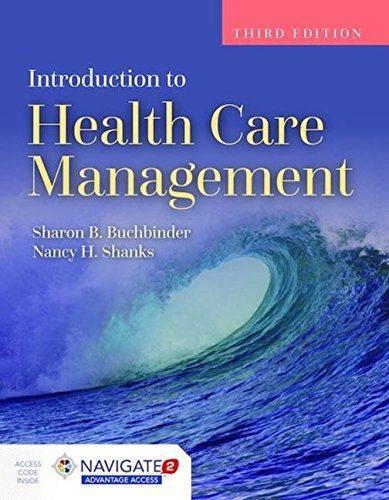Question
Read through the provided case study below. Ensure that you keep detailed notes on the main challenges and opportunities identified in the case. Complete the
Read through the provided case study below.
Ensure that you keep detailed notes on the main challenges and opportunities identified in the case.
Complete the case study template provided in the assessment information widget on UM Learn, using bullet points or paragraphs to a maximum of six pages, focusing primarily on the Analysis, Interpretation & Recommendations section.
Submit your case study template to the Assignment 3 dropbox in UM Learn.
Case Study
Procter & Gamble Case Study
Tide, Pampers, Bounty, Gillette, Crest, Scope, and Febreze. What do they all have in common? They are just a few of the brands owned by Procter & Gamble (P&G), the iconic marketer of household products. The company was established in 1837 and today serves more than five billion people in more than 70 countries. In 2017, sales exceeded US$65 billion. Of the large collection of brands, 23 have annual sales above US$1 billion. It is estimated that 98 percent of North American households use at least one P&G product, a position that has grown largely by targeting middle-class consumers. However, P&G is facing a puzzling marketing dilemma, because the number of mid-range shoppers is shrinking.
The source of the problem is the reduction in middle-class purchasing power. Many families are now pinched with rising prices for housing, food, gasoline, and medical products, but little or no wage increases. This economic condition has been described as the "Consumer Hourglass Theory." Advocates of the theory believe that purchasing power has shifted away from the once-massive middle and is concentrated now at the bottom and top. That's where consumer action is now, at the high-end market and the low-end market.
Is this simply a short-term issue? Based on P&G's research, Melanie Healey, group president for P&G's business in North America, expects middle-class downsizing will be a continuing trend. Accordingly, P&G and other companies are rethinking their target markets. Aiming at the high-end segment, the company introduced its more expensive Olay Pro-X skin-care product. Previously, P&G introduced Gain, the bargain-priced dish soap, which is aimed at the growing lower portion of the previous middle-class market, following a dip in sales of the mid-priced Tide brand. During the previous recession, P&G's lower-priced Luvs diapers gained market share from their higher-priced Pampers brand. Following a path like that of P&G, H. J. Heinz has developed more food products for the lower-priced markets. Meanwhile, retailers focusing on lower-income consumers, such as Winners and Dollarama, are attracting customers from higher-priced retailers.
Refocusing away from the mainstream middle onto high- and low-end consumers is a new marketing experience at P&G. They have increased market research on lower-income households, often using face-to-face interviews to gain in-depth understanding of these consumers. So far, the low-end and the high-end segments each are generally smaller than the former massive middle-class market, which means P&G is splitting its marketing efforts. As one company official noted, historically they have been good at doing things on a larger scale, but now they are learning how to deal with smaller sales volumes for products in each of two segments. New product development is effected, too, because the high-end segment often involves fewer products with attractive extra features that will sell profitably at higher prices. P&G is betting that the Hourglass Theory has set the course for the company's future.
Answer the following questions by reading this case study
Case Title:
Key Person (decision maker):
Case Summary (10%)
Few key bullet points
Who is the case about?
What is the current situation?
Why is the current situation happening?
When will a solution need to be completed?
Analysis, Interpretation & Recommendations
Apply key themes and concepts from Units 8 and 9 in this section to receive full marks.
Identify the target markets for three of the company’s products.
Identify and describe at least 2 target markets for each product (at least 6).
Suggested approach: 1 paragraph per product
What key marketing strategies would connect with the target markets?
Identify at least 2 strategies per target market identified above.
Suggested approach: 2 detailed bullet points per target market
What are the pricing options (including price points) the company could use for these three products?
Identify at least 2 pricing options per product.
Suggested approach: suggest listing the products and providing price point options and rationale in bullet form
What needs to be done from a strategic marketing and pricing perspective to increase the company’s sales and market share?
Define your key (3 to 5) recommendations.
Suggested approach: point form, but with sufficient detail to make sense
What approach would you take to implementing your recommendations?
Outline your implementation plan in 3 to 8 steps.
Suggested approach: numbered steps in point form, but with sufficient detail to make sense
Missing Information (10%)
Identify any “Missing” Information in the case that would have been helpful if it was provided.
Assumptions (10%)
Identify any assumptions made in your Analysis, Interpretation & Recommendations.
Step by Step Solution
3.51 Rating (151 Votes )
There are 3 Steps involved in it
Step: 1
Answer Case Title Procter Gamble Case Study Key Person decision maker Melanie Healey group president for PGs business in North America Case Summary Pr...
Get Instant Access to Expert-Tailored Solutions
See step-by-step solutions with expert insights and AI powered tools for academic success
Step: 2

Step: 3

Ace Your Homework with AI
Get the answers you need in no time with our AI-driven, step-by-step assistance
Get Started


